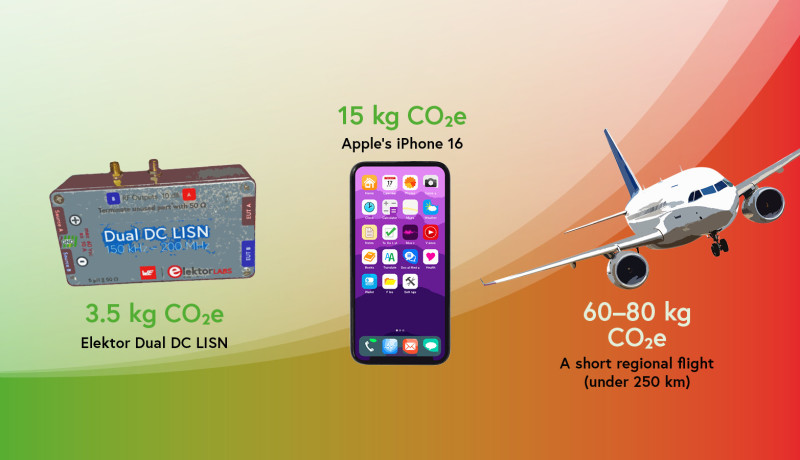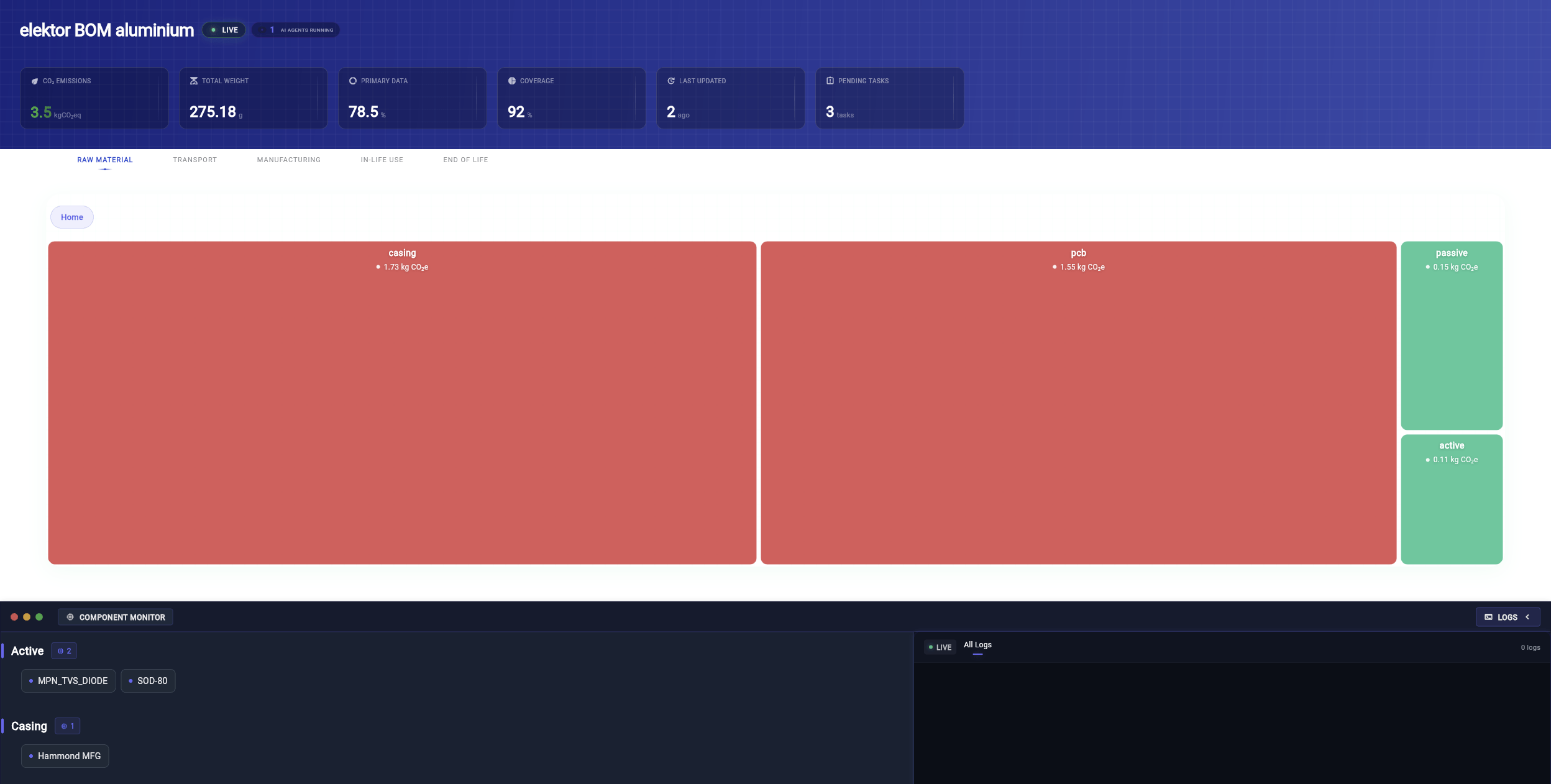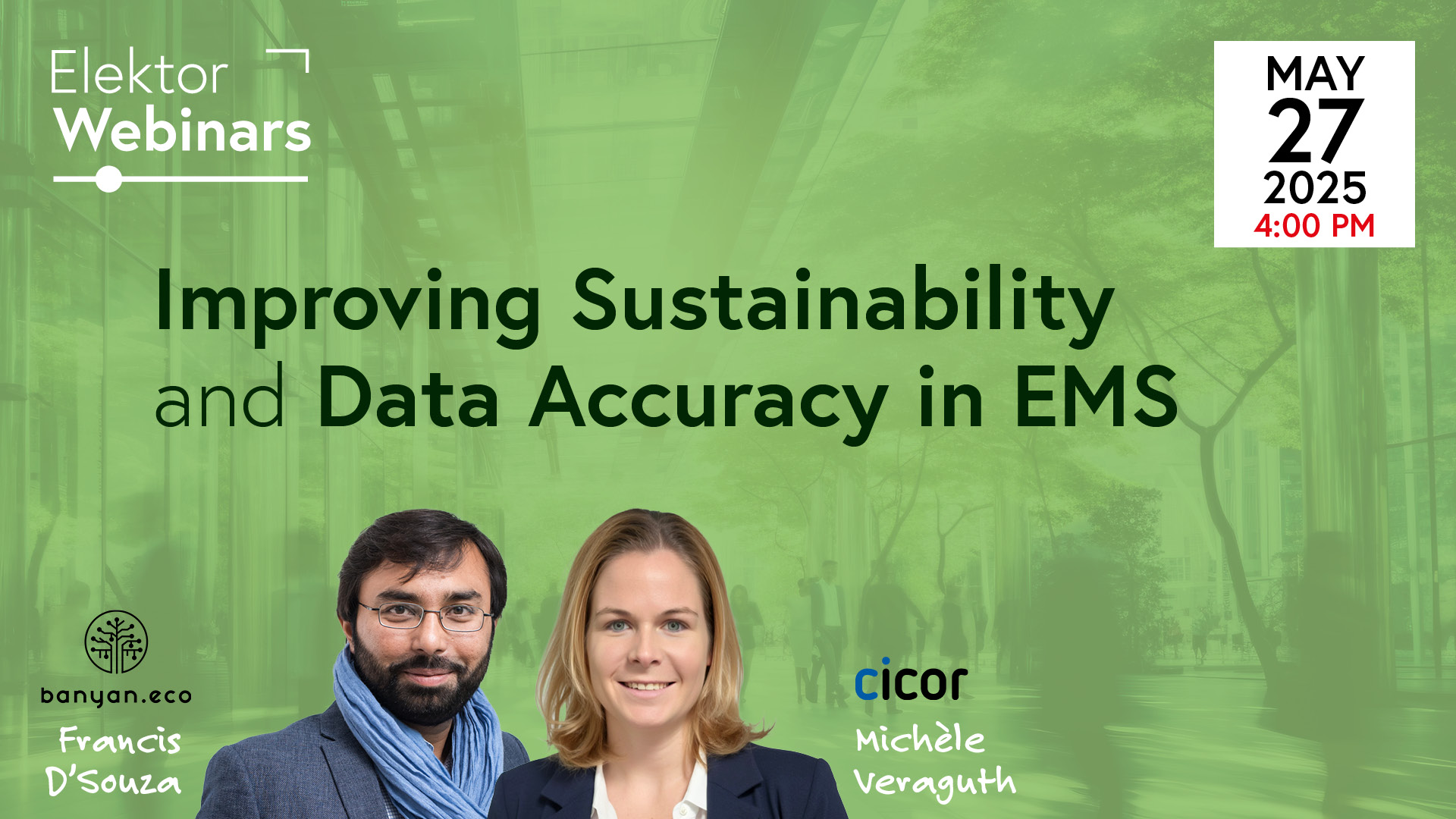Designing with Impact: Elektor Measures CO₂e Footprint of Dual DC LISN
on

Elektor has taken a foundational step toward sustainable hardware design by measuring the carbon (CO2e) footprint of one of its in-house tools: the Elektor Dual DC LISN for EMC pre-compliance testing.
In collaboration with Banyan.eco, a carbon intelligence platform for electronics, we conducted a bill-of-materials–based assessment, resulting in a calculated CO2 footprint of 3.5 kg CO₂e.
Why Should Engineers Care About CO2 footprint?
Whether you’re designing for EMC, power, or embedded systems, CO₂e is quickly becoming a design parameter, just like thermal budget or BOM cost.
New EU regulations like the Ecodesign for Sustainable Products Regulation (ESPR) are introducing mandatory reporting and product passports for electronics. That means engineers may soon need to design for carbon efficiency—and justify their material and sourcing choices.
By starting early, Elektor is creating a reference point for how small lab-grade tools can be made more transparent and sustainable.
CO₂e Breakdown of the Elektor Dual DC LISN – A Practical View
The 3.5 kg CO₂e footprint reflects the upstream impact of:
- Casing: 1.77 kg CO₂e
- PCB: 1.18 kg CO₂e
These two components alone account for nearly 85% of total emissions. Here's a heatmap breakdown generated in Banyan.eco's LCA engine:

How Does That Compare?
- Apple’s iPhone 16 has around 15 kg CO₂e attributed to materials alone, per their latest Environmental Report.
- A short regional flight (under 250 km) emits 60–80 kg CO₂e per passenger — 20x more than this lab tool.
Can We Do Better?
Absolutely. Francis D'Souza from Banyan.eco also gives the answer: “Moving to recycled aluminum could help tackle a big part of the CO₂e emissions and is relatively low-hanging fruit.” The casing and PCB account for most of the LISN’s impact. Material substitutions, smarter sourcing, and supply chain improvements will help us bring that number down.A Role for IPC
Getting more accurate data — moving away from industry averages to supplier (primary) data — is key. The upcoming IPC standard 1783-CO₂e focuses on just that. Banyan.eco is working with IPC and industry leaders to shape it.Interested in diving deeper into carbon in electronics? Join Our Webinar on CO₂e in Electronics
To share what we’ve learned, we’re hosting a free webinar covering:
- Why carbon matters in electronics
- How to begin a carbon assessment
- What the EU is about to require



Discussion (0 comments)